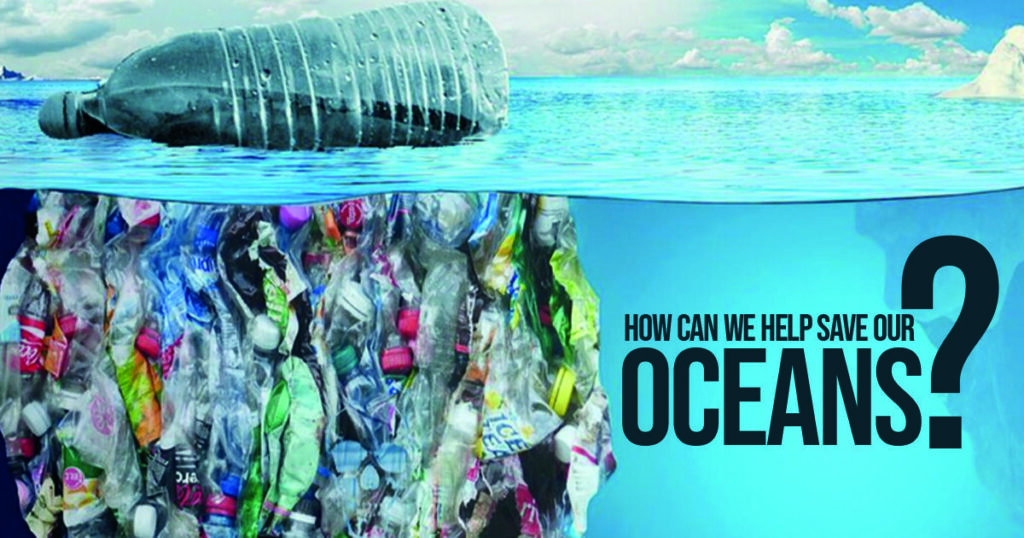
If you want to make a positive impact on the environment, there are plenty of things you can do to help save the ocean. Some of the most common methods include helping to reduce your carbon footprint, advocating for the environment, and reducing your use of single-use plastics. Read on to learn how you can get started.
Climate change
With rising seas, oceans are absorbing more heat and carbon than ever before. This is changing the nature of marine ecosystems and their interactions with climate. These impacts are particularly relevant to coastal communities.
The ocean is a vital buffer against climate change. It absorbs around a third of the excess heat produced by anthropogenic emissions. As a result, it’s now the largest “carbon sink” on earth. Oceans are also the source of about half of the oxygen on earth. They are storing about 30 percent of the anthropogenic CO2 released into the atmosphere over the past 200 years.
Climate change is also having a profound impact on the ocean, both through its influx of excess heat and its acidification. The latter has the potential to cause serious damage to important industries and industries dependent on coastal protection.
According to the Intergovernmental Panel on Climate Change (IPCC), one-quarter of all ocean species will be negatively affected by climate change by 2050. By the century’s end, 70 to 90 per cent of coral reefs could be lost due to warming.
To meet the targets of the Paris Agreement, the world must limit global temperature increases to 2 degrees Celsius above pre-industrial levels. However, current pledges under the agreement are insufficient to achieve this. In order to reach that goal, more aggressive action is required.
The full implementation of the Paris Agreement will have major effects on key marine ecosystems. Such effects are expected to scale up to the level of CO2 emissions.
One way to help reduce carbon pollution is by protecting mangroves and seagrasses. Other solutions include shifting diets, installing offshore wind turbines, and decarbonizing the shipping industry.
Single-use plastics
Single-use plastics are items that are meant to be used once and then thrown away. They include straws, bags, stirrers, and more.

While these plastics have many useful applications, they are also a major cause of pollution and climate change. Currently, the World Economic Forum predicts that plastic use will grow by 3.8% a year until 2030.
Plastics, though, are not only harmful to the environment, they can also harm wildlife. According to scientists, 60 percent of seabird species have been found to have ingested plastic.
These pollutants can encroach on the digestive system and obstruct the intestinal walls. In some cases, they can even kill. When an animal chokes to death, it is often due to strangulation caused by a plastic item.
A lot of these single-use plastics end up in landfills and waterways. This is a huge issue for wildlife. There are over 800 different species of fish and other marine life that have been harmed by these products.
These pollutants are also expensive to clean up. The cost of cleaning up plastics can be several billion dollars. If every single-use plastic bag were recycled, it would save up to $13 billion a year in environmental damage.
The European Union is considering a ban on single-use plastics, including straws and cutlery. However, it will still take some time to implement the ban. It is likely that Canada will follow suit, as well.
As the world becomes more aware of the negative impact of plastics, more and more plastic bans are taking place. Some of these include California’s AB 1080, which passed in February of this year.
Other countries, such as India, intend to ban single-use plastics by 2022. These bans are designed to help reduce the amount of waste.
Wetland ecosystems
Wetland ecosystems provide a number of benefits to both human and non-human life. These include filtering pollutants, removing sediment, and providing a flood protection system.
Many of these benefits are directly linked to the presence of healthy wetlands. However, these ecosystems are often overlooked in land use planning.
A major benefit of wetlands is their ability to trap and sequester carbon. Mangrove forests can store up to ten times as much carbon as land-based forests.
Additionally, a number of wetlands serve as wildlife habitats. One third of threatened species depend on wetlands for their survival. The dwarf lake iris, whooping crane, and American crocodile are just a few examples of rare species that call wetlands home.
Coastal wetlands support numerous ecosystem services that contribute to the well-being of both humans and animals. They reduce the frequency and intensity of flooding, protect homes and communities from hurricanes, and prevent pollution from reaching the ocean.
As sea levels continue to rise, coastal wetlands are becoming more susceptible to development. In fact, some coastal wetland ecosystems could be drowned by higher rates of sea level rise. This could have a significant impact on both the environment and human health.
Research has shown that some wetlands are among the world’s most productive and ecologically diverse systems. In some cases, a single wetland can produce more plant material per acre than any agricultural crop.
Another benefit of wetlands is their contribution to climate stability. These ecosystems help to maintain water supplies, regulate floods, and recharge underground aquifers.
Some wetlands are also important for preventing disease transmission. For example, a recent study determined that Enterrococus bacteria are lower in wetlands than in seagrass meadows.
Reduce your carbon footprint
The carbon footprint is a term often used to measure the greenhouse gas emissions that are produced by everyday activities. It is important to understand this concept, as it is a major cause of climate change.
There are many ways to minimize your carbon footprint. One of the best is to switch to green energy. However, this may not be possible for all people.
Another method is to take a look at your daily habits and figure out how to reduce them. Some ideas include cutting down on your mileage, ditching your car, and switching to a low-carbon energy provider.
A carbon footprint calculator is also a good way to determine your carbon footprint. Many companies provide apps that do this. These apps use many factors to determine your carbon footprint.
Food production plays a big role in determining your carbon footprint. For example, plant-based diets significantly reduce carbon dioxide emissions.
Food also requires energy to harvest, process, and ship. In fact, the production of dairy, meat and eggs accounts for nearly a quarter of global greenhouse gas emissions.
Reducing your carbon footprint is a great way to save money. If you need to travel to work, consider public transport or riding a bike. This will not only help reduce carbon emissions, but will improve your health.
Choosing to buy locally is another small but significant step in the right direction. You can even help save the ocean by switching to reusable water bottles and grocery bags.
Investing in renewable energies is the smartest move you can make. Buying a hybrid vehicle is also a smart move.
Buying eco-friendly products and switching to LED light bulbs are other ways to reduce your carbon footprint. Other methods include composting food waste and using alternative transportation modes.
Advocacy
If you are interested in making a difference in the world, consider becoming an advocate for saving the ocean. You can begin by simply taking actions like eating organic, reducing plastic waste and consuming seafood that comes from sustainable sources. However, if you want to make a bigger impact, you can volunteer, enroll in a college degree program, or pursue a career in high-impact fields.
Oceans play a vital role in the global economy. Approximately three-quarters of trade involves marine transportation, which is why it’s important to protect these seas.
To prevent pollution and preserve the health of the ocean, Oceana conducts science-based policy campaigns. The organization also works to stop major ocean pollution sources, including plastics and overfishing. It’s also involved in targeted campaigns to ensure the survival of marine mammal populations.
Greenpeace International promotes policies to reduce plastic consumption and ocean acidification. In addition, it helps big corporations to implement sustainable practices.
Another effective way to communicate with decision-makers is through letters to the editor. Writing a letter on a specific news story increases your chances of having your letter published.
In addition to being a good way to get your voice heard, letters to the editor can also be a great way to help the ocean. Some newspapers will accept letters for general publication, but you will want to keep them focused.
When you join the Sea Shepherd Conservation Society, you become part of a team of thousands of dedicated fishermen and volunteers who work to protect the ocean and its creatures. They provide technical advice to governments and consult local communities. Through their efforts, they’ve stopped habitat destruction in many countries and facilitated the arrest of hundreds of poaching vessels.
